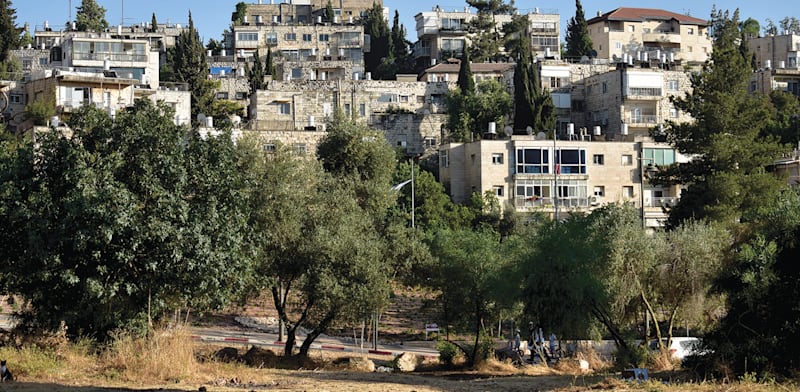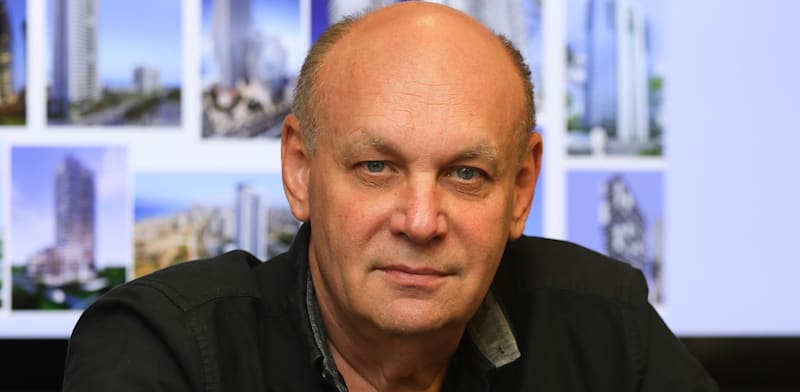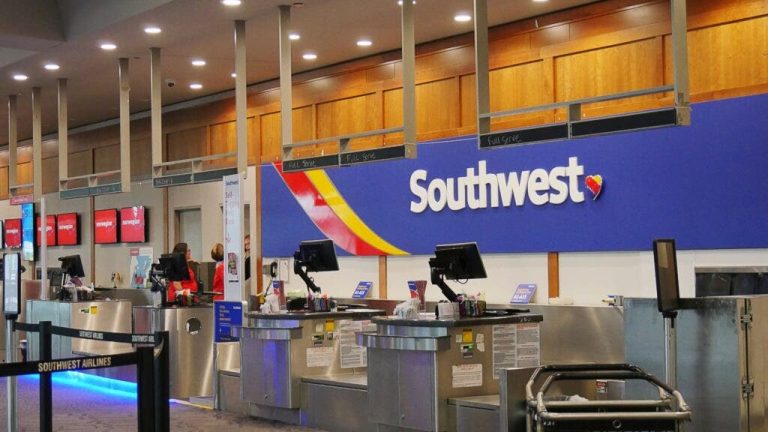In April 2025 a very special apartment was sold in Jerusalem. The 296 square meter, ground floor, five-room apartment in the Nahlaot neighborhood was sold for NIS 16.15 million, even though it has no protected room. The price clearly illustrates the high demand for apartments in the prestigious central Jerusalem neighborhood which has its own historic character. However, despite the many special features of the neighborhood, it has a notable disadvantage – it is old, and so many of its buildings do not have protected rooms.
This drawback is not unique to Nahlaot. In many cities in Israel, especially in areas of high-demand, there are quite a few high-end neighborhoods with buildings that were constructed decades ago without protected rooms, which are still considered highly desirable and prestigious. So while on the one hand, the value of such high-end real estate is skyrocketing, on the other hand, the apartments lack a basic element of security.
“Globes” looks at five such neighborhoods, using data from the Madlan real estate website, citing the median construction year – the year in which 50% of the apartments in each neighborhood had already been built.
According to the Civil Defense Regulations introduced in 1992, every new building that is constructed is required to include either a protected room for each apartment, or a shared protected space for each floor, and an institutional protected space for public, office and commercial buildings. This means that buildings put up before 1992, and which have not added additional construction of a protected room, do not include a protected space within the building. However, many pre-1992 buildings offer underground shelters, beneath or adjacent to the building. The median construction year indicated whether most of the buildings in a neighborhood are old and do not include a protected space within the building.
Following the recent war with Iran, which clearly demonstrated the shortfalls in protection in old residential projects in Israel, the question arises if the shortage of protected rooms in such neighborhoods will lead to a fall in demand for them?
Madlan CEO Tal Kopel believes it won’t. He says, “Although the importance of protected rooms has been on the rise recently, we believe that their absence will not harm demand for these neighborhoods. The biggest attraction of these neighborhoods is the population that lives in them and the communities that have been created as a result. More than any constraint of one kind or another, Israelis like to live with people similar to themselves, in addition to the advantages that made these neighborhoods attractive in the first place, first and foremost its location. So, we believe the absence of protected rooms will not harm their popularity. On the other hand, it may accelerate their renewal.”
RELATED ARTICLES
Real estate appraiser Saar Peled, who has been working in the Sharon region for many years, with an emphasis on Herzliya, observes that adding a protected room to an existing apartment represents a double increase in value: “Firstly, adding a protected room increases the size of the apartment, and through this alone it increases the value, certainly in high-end neighborhoods. Secondly, there is a general effect on the apartment. Today, projects with a protected room are undoubtedly more sought after, even in high-end neighborhoods. Estimates are that a protected room adds between 5% and 10% to the value of the apartment, and in terms of high-end neighborhoods, this is an addition of hundreds of thousands of shekels, while the cost of building a protected room is the same for every neighborhood, everywhere. This is a very significant improvement in value.”
Neve Avivim, Tel Aviv: Dozens of projects in the pipeline
Median construction date: 1970
Area: 776 dunams (194 acres)
Population: About 13,000
Neve Avivim is in North Tel Aviv, north of Einstein Street, south of Keren Kayemet Boulevard, east of Derekh Namir and west of Haim Levanon Street. Most of the buildings in the neighborhood was built in the 1960s and 1970s. In Neve Avivim dozens of TAMA 38 earthquake strengthening projects are currently being promoted as well as some urban renewal (demolition and reconstruction) projects.
The price of apartments in the neighborhood five years ago were an average of NIS 4.187 million, according to Madlan, while today the average apartment sells for NIS 5.431 million – a rise of 30%. The average price per square meter is NIS 49,200 and the most expensive sale of an apartment in the neighborhood has been NIS 13.5 million, for a 151 square meter ground floor, four room apartment built last year, thus including a protected room.
A 98 square meter, four-room, first floor apartment was sold in May 2025 for NIS 4.95 million in a building constructed in 1970.
Rehavia, Jerusalem: The average price has fallen
Median construction date: 1960
Area: 124 dunams (31 acres)
Population: About 8,000
Rehavia is one of Jerusalem’s most exclusive and in-demand neighborhoods, among other things because it houses many important national institutions like the prime minister’s residence, and the president’s residence. The neighborhood was built in the first half of the twentieth century and most of the buildings are decades old.
Rehavia is the only one of the five neighborhoods examined here where the average price has fallen over the past five years due to the uncertainty on the future of the church-owned land, much of which is located in the neighborhood. This uncertainty has led to price declines in the neighborhood for years. According to Madlan, five years ago the average apartment price in the neighborhood was about NIS 3.1 million shekels, today it is NIS 2.956 million – a 4% decrease.
The average price per square meter in the neighborhood is NIS 49,500, and the highest deal reported this year, in January 2025, was NIS 7.8 million for a 138 square meter four-room apartment built in 1993, with a protected room.
A master plan for the Rehavia neighborhood, which came into effect in 2014, is currently being implemented. It also includes parts of the Kiryat Shmuel, Talbiya and Shaarei Hesed neighborhoods, covering an area of 650 dunams (162.5 acres). The plan gives new construction rights and additions to 300 of the 650 housing units in the neighborhood, which will also allow for additional protected rooms. The plan also designates about 150 buildings for preservation.
Veteran Jerusalem RE/MAX agent Alyssa Friedland says: “People don’t choose a neighborhood based on the number of protected rooms it has. They choose a neighborhood because of its community, because of its education, because of its synagogues. Otherwise new neighborhoods would be more in demand, because all the homes have protected rooms. But that’s not the consideration guiding buyers.”
Nahlaot, Jerusalem: NIS 16 million for a home without a protected room
Median construction date: 1955
Area: 200 dunams (50 acres)
Population: About 12,000
Nahlaot is one of the best known neighborhoods in the capital, and in all of Israel, built as part of the process of Jerusalem residents moving outside the Old City walls. It extends over the area between Jaffa Street to the north and Bezalel Street to the south. The first houses in the neighborhood were built in the late 19th century, and the area is characterized by low-rise homes, built of the famous Jerusalem stone, and of course most of them without a protected room.
According to Madlan, apartment prices in the neighborhood have risen 46% in the last five years, and the average price per square meter NIS 45,300.The most expensive apartment sold this year was for NIS 16.15 million, which as it was built in 1960 does not have a protected room. The Jerusalem Municipality drafted a detailed master plan for the south of the Nahlaot neighborhood, which was approved in 2016. The plan includes an addition of 470 apartments to the existing 960, and aims to balance development while preserving the neighborhood’s character and values.
Friedland observes that today, even in Jerusalem’s high-end neighborhoods, buyers are primarily interested in the protection available in the apartment. “One of the first things people ask is whether there is a protected room,” she says, “even when it comes to apartments worth more than NIS 10 million, and even when the buyers are foreign residents. The protected room is now the most important thing. “There’s an apartment that I’ve been renting out for years, and I easily rent it from one tenant to another and now for three months I haven’t been able to find a tenant, because there’s no protected room, and the nearest shelter isn’t in the building, but a few minutes away.”
Lamed neighborhood, Tel Aviv: No plan for Rova 1
Median construction date: 1970
Area: 837 dunams (209.5 acres)
Population: About 10,000
The Lamed neighborhood is considered one of the most community and family orientated in Tel Aviv and is at the northernmost extreme of the city. It is east of the currently under construction Sde Dov, west of Ramat Aviv A and Derech Namir, south of the New Ramat Aviv and Nofei Yam neighborhoods, and north of the Kochav Hatzafon neighborhood.
Construction began a little later than the first homes in the Neve Avivim neighborhood, but it was also built mainly in the 1970s. The average price for an apartment in the neighborhood five years ago, according to Madlan, was NIS 3.743 million, and is today NIS 4.381, up 17%. The average price per square meter in the neighborhood is NIS 48,300.
A penthouse in the neighborhood, on Levi Eshkol Boulevard, without a protected room, was recently sold for NIS 7.95 million. The highest deal in the neighborhood this year was NIS 8.85 million for 146 square meter, five-room apartment in March. This is a new apartment due to be completed in 2028, so it will have a protected room. Lamed is not currently enjoying a major renewal boom, partly because the plan for Rova 1, in which it is included, has not yet been approved.
Herzliya Bet, Herzliya: Most of the homes are houses with gardens
Median construction date: 2004
Area: 1,250 dunams (316.5 acres)
Population: About 4,000
Herzliya Bet is a narrow strip surrounded by Road 2 to the west and the railway line to the east, very close to Herzliya Pituah, a very high-end neighborhood in itself. Construction began in the 1960s, but over the last decade, much land has been cleared for single-family houses – a development that affects the median construction year data. In any case, many residential buildings in the neighborhood are quite old, 50 years old or more, and they do not include a protected room.
According to Madlan, the average price for an apartment in the neighborhood five years ago was NIS 3.913 million, while today it is NIS 4.602 million up 17.5%. The price per square meter is NIS 51,100. These figures are impacted by the construction of houses with gardens in the neighborhood in recent years, which of course include a protected room.
The biggest deal this year in the neighborhood this year was for NIS 7.35 million, for a 124 square meters, five-room, seventh floor apartment to be completed in 2028, which will of course include a protected room.
At the end of April 2025, an apartment was purchased in the neighborhood in a building built in 1970, so it does not have a protected room. The apartment, 84 square meter, four room apartment was sold for NIS 3.55 million. Appraiser Saar Peled believes that the current situation will lead to accelerated renewal in Herzliya Bet. He says, “In such neighborhoods, it will be easier to promote renewal projects because the residents have the financial ability. I don’t believe that the absence of protected rooms will affect the demand for such a neighborhood. The residents will not run away from it but will work to renew it. These are neighborhoods that will remain exclusive and sought-after one way or another.”
Published by Globes, Israel business news – en.globes.co.il – on July 24, 2025.
© Copyright of Globes Publisher Itonut (1983) Ltd., 2025.








